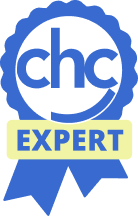
Current treatments for autism spectrum disorder (ASD) seek to reduce symptoms that interfere with daily functioning and quality of life. Treatments can be given in education, health, community, or home settings, or a combination of settings.
As individuals with ASD leave high school and grow into adulthood, additional services can help improve health and daily functioning, and facilitate social and community engagement.
Types of Treatments
There are many types of treatments available. These treatments generally can be broken down into the following categories, although some treatments involve more than one approach.
Behavioral approaches
Behavioral approaches focus on changing behaviors by understanding what happens before and after the behavior. Behavioral approaches have the most evidence for treating symptoms of ASD. They have become widely accepted among educators and healthcare professionals and are used in many schools and treatment clinics. A notable behavioral treatment for people with ASD is called applied behavior analysis (ABA). ABA encourages desired behaviors and discourages undesired behaviors to improve a variety of skills. Progress is tracked and measured.

Two ABA teaching styles are discrete trial training (DTT) and pivotal response training (PRT).
- DTT uses step-by-step instructions to teach a desired behavior or response. Lessons are broken down into their simplest parts, and desired answers and behaviors are rewarded. Undesired answers and behaviors are ignored.
- PRT takes place in a natural setting rather than clinic setting. The goal of PRT is to improve a few “pivotal skills” that will help the person learn many other skills. One example of a pivotal skill is being able to initiate communication with others.
As individuals with ASD leave high school and grow into adulthood, additional services can help improve health and daily functioning, and facilitate social and community engagement.
Developmental approaches
Developmental approaches focus on improving specific developmental skills, such as language skills or physical skills, or a broader range of interconnected developmental abilities. Developmental approaches are often combined with behavioral approaches.
The most common developmental therapy for people with ASD is speech and language therapy. Speech and language therapy helps to improve the person’s understanding and use of speech and language. Some people with ASD communicate verbally. Others may communicate through the use of signs, gestures, pictures, or an electronic communication device.
Occupational therapy teaches skills that help the person live as independently as possible. Skills may include dressing, eating, bathing, and relating to people. Occupational therapy can also include:
- Sensory integration therapy to help improve responses to sensory input that may be restrictive or overwhelming.
- Physical therapy can help improve physical skills, such as fine movements of the fingers or larger movements of the trunk and body.
The Early Start Denver Model (ESDM) is a broad developmental approach based on the principles of ABA. It is used with children 12–48 months of age. Parents and therapists use play, social exchanges, and shared attention in natural settings to improve language, social, and learning skills.

Autism can present in many different ways, but at its core it’s about social communication. Check out our podcast to learn more about parenting a young child with autism.
Educational approaches
Educational treatments are given in a classroom setting. One type of educational approach is the Treatment and Education of Autistic and Related Communication-Handicapped Children (TEACCH) approach.
Educational treatments are given in a classroom setting. One type of educational approach is the Treatment and Education of Autistic and Related Communication-Handicapped Children (TEACCH) approach. TEACCH is based on the idea that people with autism thrive on consistency and visual learning. It provides teachers with ways to adjust the classroom structure and improve academic and other outcomes. For example, daily routines can be written or drawn and placed in clear sight. Boundaries can be set around learning stations. Verbal instructions can be complemented with visual instructions or physical demonstrations.
Social-relational approaches
Social-relational treatments focus on improving social skills and building emotional bonds. Some social-relational approaches involve parents or peer mentors.
- The Developmental, Individual Differences, Relationship-Based model (also called DIR or “Floor Time”) encourages parents and therapists to follow the interests of the individual to expand opportunities for communication.
- The Relationship Development Intervention (RDI) model involves activities that increase motivation, interest, and abilities to participate in shared social interactions.
- Social Stories provide simple descriptions of what to expect in a social situation.
- Social skills groups provide opportunities for people with ASD to practice social skills in a structured environment.

Pharmacological approaches
There are no medications that treat the core symptoms of ASD. Some medications treat co-occurring symptoms (those that happen along with ASD) and can help people with ASD function better. For example, medication might help manage high energy levels, inability to focus, or self-harming behavior, such as head banging or hand biting.
Medication can also help manage co-occurring psychological conditions, such as anxiety or depression, in addition to medical conditions such as seizures, sleep problems, or stomach or other gastrointestinal problems.
It is important to work with a doctor who has experience in treating people with ASD when considering the use of medication. This applies to both prescription medication and over-the-counter medication. Individuals, families, and doctors must work together to monitor progress and reactions to be sure any negative side effects of the medication do not outweigh the benefits.
Psychological approaches
Psychological approaches can help people with ASD cope with anxiety, depression, and other mental health issues. Cognitive-behavior therapy (CBT) is one psychological approach that focuses on learning the connections between thoughts, feelings, and behaviors. During CBT, a therapist and the individual work together to identify goals and then change how the person thinks about a situation to change how they react to the situation.
Complementary and alternative treatments
Some people with ASD and their families use treatments that do not fit into any of the other categories. These treatments are known as complementary and alternative treatments. Complementary and alternative treatments are often used to supplement more traditional approaches. They might include special diets, herbal supplements, chiropractic care, animal therapy, arts therapy, mindfulness, or relaxation therapies. Individuals and families should always talk to their doctor before starting a complementary and alternative treatment.
Additional ASD Treatment Options
There may be other treatments available for individuals with ASD. Talk to a doctor or healthcare provider to learn more.
Source: Centers for Disease Control and Prevention | Treatment and Intervention for Autism Spectrum Disorder, https://www.cdc.gov/autism/treatment/index.html | Public domain. Retrieved September 17, 2024




